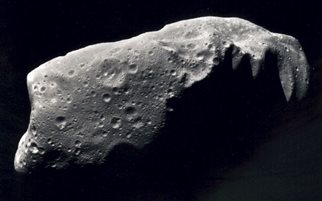Playing is Learning
Asteroids in Deep Space
October 11th, 2016
| Ads | ||
|
Play the Challenge
|
||
|
A New Word is Coined A new Character is revealed A new Game is Afoot |
An Edutainment Adventure Based on Three Rounds of Investigations
|
|
|
Welcome to the World of PROFESsee™by seeCOSM™ PROFESsee™ is my title. I am the perpetual learner, in pursuit of knowledge, wisdom and truth. I derived my name from professor |
 |
|
|
Asteroids have become increasingly popular because of a space mining (who comes up with these business ideas) industry interested in mining asteroids. Asteroids are rocky objects, with most orbiting the sun. Often times, they are found along the orbits of Mars and Jupiter. The constituents of asteroids are similar to those of other planets in the solar systems. In fact, some of the bigger ones are known as planetoids. These big ones are similar in shape to the Earth with diameters between 100 and 500 miles. The smaller ones, however, are as little as 5 miles in diameter. As the sizes of the asteroids decrease, they lose the earth-like spherical forms and begin to take irregular shapes (the shape of my head). Most Asteroids in deep space can be found in the Asteroid Belt – the orbit between Mars and Jupiter mentioned above – although there are other asteroid groups in the Solar System. Four Asteroids make up the bulk of the mass of the Asteroid belt – Ceres, Vesta, Pallas, and Hygiea. Despite the many asteroids that make up the Asteroid belt, the total mass is still less than the mass of the moon (96% less). Ceres the biggest of the Asteroids is also a dwarf planet – a cross between a planet and a natural satellite. Ceres was discovered on the 1st of January 1801 by Giuseppe Piazzi, who then named it after the Roman goddess Ceres (must have been a romantic). Additionally, asteroids are classified primarily into three, based on their composition. The commonest of the group with 75% of known asteroids is the C-type. The C-type asteroids are greyish in color and carbonaceous. They are found in the Asteroid Belt’s outer regions. Making 17% of asteroids are the S-type asteroids. They are a shade of green and red, are siliceous and are found in the inner sector of the Asteroids Belt. The last types are the M-type asteroids. They are reddish in color and are found in the middle sector of the Asteroid Belt. Other types include the V-type with Vesta being a typical example. Asteroids have been known to come very close to the earth to peep on mere mortals and occasionally enter the earth’s atmosphere (when the view is too enthralling) as Meteors. As recently as the 15th of February 2013, there was pandemonium in Chelyabinsk, Russia when an asteroid hit the city injuring 1,200 people. Apparently, it had fallen in love with a Russian beauty, but saw the beauty with another man. The Asteroids from deep space, that enter into the atmosphere and never touch the surface, “burn” and form what is known as shooting stars. Can you Zoom to the correct asteroid? Image courtesy of: http://nssdc.gsfc.nasa.gov/photo_gallery/photogallery-asteroids.html |
||
Latest News / Events
E-mail [email protected]
The Professee™ Newsletter Beta
http://www.seecosm.com/
http://www.seecosm.com/

